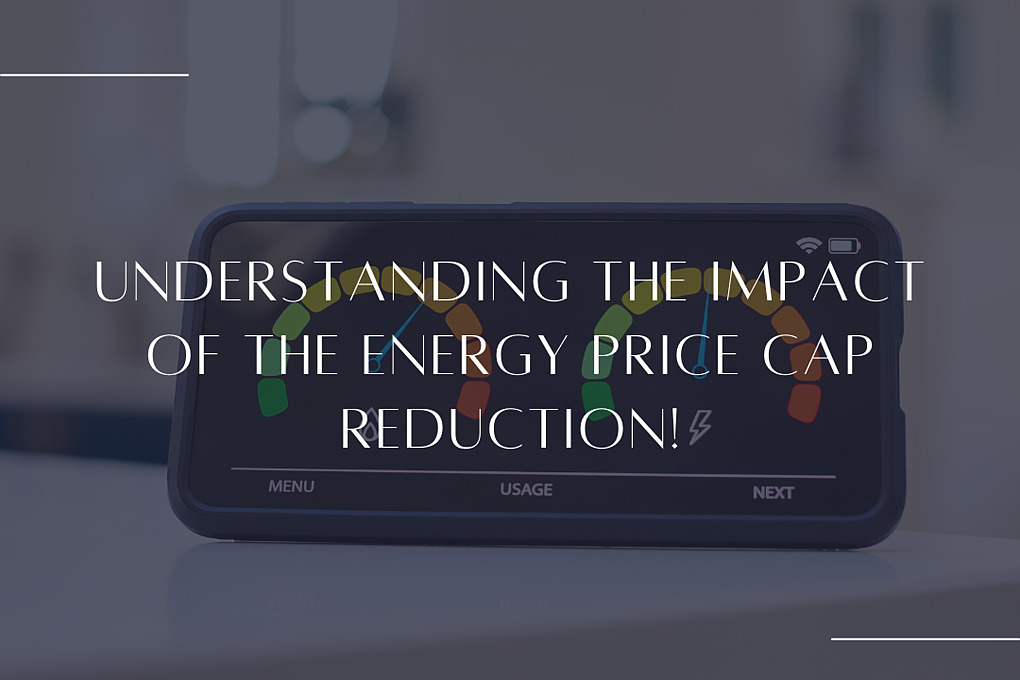Understanding the Impact of the Energy Price Cap Reduction

- Jul 9th 2023
In response to the rising energy costs over the past year, regulatory body Ofgem has made the decision to reduce the Energy Price Cap from July to September. This adjustment is a result of the decline in wholesale energy prices. However, Ofgem predicts that prices are unlikely to return to pre-crisis levels in the near future.
So, how significant will this reduction in the price cap be for your household bills? And can we expect prices to continue decreasing? Let's delve deeper into these questions.
Understanding the Energy Price Cap.` The Energy Price Cap was introduced by the government in 2019 to address the escalating costs of wholesale energy. It sets a maximum price that energy suppliers can charge households for each kilowatt hour (kWh) of gas and electricity consumed.
Since October, the Energy Price Guarantee (EPG) has been in place as an additional temporary measure. It limits the annual energy bill for a typical household using gas and electricity (paying by direct debit) to £2,500. Starting from July, the Energy Price Guarantee will return to £3,000.
Consequently, the new Energy Price Cap will be the lower of the two, resulting in a maximum energy bill of £2,074 per year for a typical household in England, Scotland, and Wales. This translates to an approximate annual saving of £426, or 17%, for the average household.
It's important to note that the government's Energy Bills Support Scheme, which provided a £400 discount on energy bills from October 2022 to March 2023, has come to an end.
If you are on a fixed tariff for your energy supply, the Energy Price Cap will not impact you. However, if you are on a default energy or standard variable tariff, the cap will limit the maximum price per unit of energy charged by suppliers.
For those with pre-payment meters, the Energy Price Cap reduction will lead to slightly larger savings as the cost will align with that of direct debit users.
If you pay by direct debit, your energy bills are typically based on estimated usage. If you are in credit, it's advisable to provide a meter reading and communicate with your supplier to ensure accurate billing.
Effects on Energy Bills From July to September, the Energy Price Cap is set at £2,074 per year. However, this is an estimation for a typical or "medium-use household." It does not place a cap on your total bill but rather limits what suppliers can charge per unit of energy consumed.
The following table illustrates the average rates charged per unit of energy used under the Energy Price Cap:
Energy Price Cap (Apr-Jun 2023) Gas 10.3p per kWh and Electricity 33.2p per kWh
Energy Price Cap (Jul-Sep 2023) Gas 7.5p per kWh and Electricity 30.1p per kWh
The above is based on average rates for direct debit users, which vary by region.
Ofgem defines a typical or "medium-use household" as a two to three-bedroom house with two or three occupants. Energy usage and costs will vary based on factors such as home size, energy efficiency, and appliance usage.
Standing Charges and Future Trends The fixed standing charge, which covers connection costs regardless of energy usage, will not be altered by the Energy Price Cap. The amount you pay for the standing charge depends on your supplier, tariff, and location. On average, the daily standing charge for electricity remains at 53p, and for gas, it is 29p, equating to an annual average of approximately £300.
While experts anticipate further reductions in energy costs, the official cap for the period from October to December 2023 will only be confirmed on 25th August by Ofgem.
In announcing the quarterly update to the Energy Price Cap, Ofgem CEO Jonathan Brearley emphasised the importance of collaboration among the government, Ofgem, consumer groups, and the industry to support vulnerable groups and navigate the post-crisis energy landscape.








